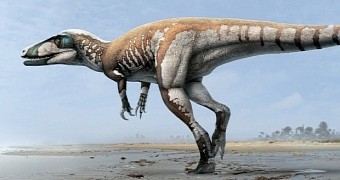A recent paper in the journal Gondwana Research describes a set of fossilized remains that were uncovered by miners digging at a field in New South Wales and that paleontologists say belong to the absolute largest carnivorous dinosaur so far unearthed in Australia.
The remains, a foot bone, a forearm, a hip fragment, a rib and a claw measuring an astounding 10 inches (25 centimeters) in length, are estimated to date back to around 110 million years ago.
In 2005, the miners who discovered the fossils donated them to the Australian Opal Center. It wasn't until many years later that researchers got around to studying them and identified them as belonging to the largest carnivorous dinosaur ever documented anywhere in Australia.
Because the remains were found close to the town of Lightning Ridge and also because of the size of the claw included in the set, the long lost predator was nicknamed “Lightning Claw.”
Paleontologists suspect that it could be an entirely new species, but they say they need to find and study more fossils before they can officially label it as such. Still, it's pretty obvious this ancient beast looks different from all the other carnivores that roamed this corner of the world 110 million years back.
“I immediately recognised this fossil was something new,” University of New England paleontologist Phil Bell commented on the find in an interview, as cited by DM.
The beast was a fierce predator
Judging by the size of the fossilized remains discovered by miners and offered to the Australian Opal Center, experts estimate this ancient beast that lived in present-day Australia millions of years ago measured around 23 feet (7 meters) from head to tail.
As for its massive claws, it probably used them to grab onto its prey. Thus, paleontologists think the predator used its claws sort of like grappling hooks, sinking them into its victims to keep them from running away until it managed to deliver a killing bite.
Being as big and as well endowed slaughter tools-wise as it was, the dinosaur must have been a dominant species. Standing at the top of the food chain, odds are it didn't have any natural predators.
The particularities of its skeleton identify the dinosaur as a megaraptorid, a rare group that flourished in the mid-Cretaceous and that is mostly known based on fossils recovered from Argentina.
Interestingly, paleontologists think this dinosaur could be among the first megaraptorids to emerge on our planet. “The ‘Lightning Claw’ appears to be the ancestor of all megaraptorids,” said specialist Phil Bell in a statement.

 14 DAY TRIAL //
14 DAY TRIAL //